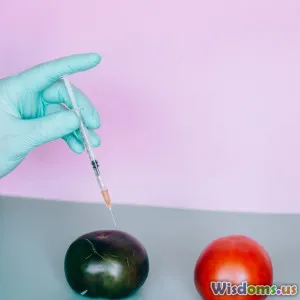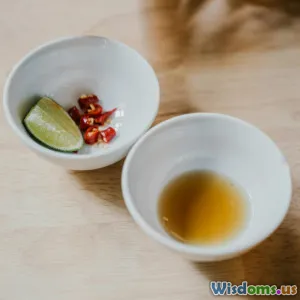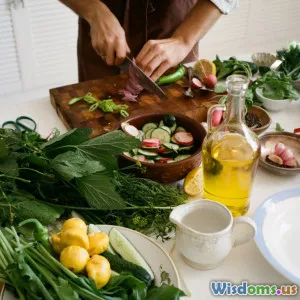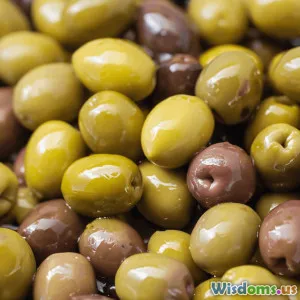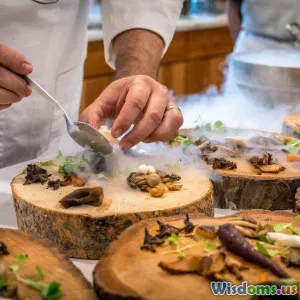
Innovative Cooking: Experimenting with Flavors
7 min read Explore how innovative cooking techniques redefine flavor combinations to elevate culinary experiences. (0 Reviews)
Innovative Cooking: Experimenting with Flavors
Introduction
What if your taste buds could embark on a thrilling adventure without leaving your kitchen? Innovative cooking—where traditional gastronomy meets fearless experimentation—offers just that. It's a movement fueled by creativity, science, and curiosity, inviting chefs and enthusiasts alike to explore uncharted territories of flavor. From using molecular gastronomy to blending culturally diverse ingredients, innovative cooking challenges the norms and reinvents what’s possible on your plate.
In this article, we'll dive deep into how experimentation with flavors redefines culinary art, offering approaches to mix ingredients, techniques, and textures innovatively. Whether you’re a professional chef or a passionate home cook, learning these methods can inspire bold, unforgettable dishes.
The Foundations of Flavor Innovation
Understanding Flavor Principles
Before experimenting, it’s crucial to understand the basic building blocks of flavor: sweet, sour, salty, bitter, umami, and increasingly acknowledged, fat. Each plays a distinct role in eliciting taste sensations.
For example, umami—the savory taste found in aged cheese, mushrooms, and soy sauce—has transformed global culinary practices by emphasizing depth and richness. Recognizing how flavors interact helps cooks balance and contrast ingredients creatively.
The Science Behind Flavor Pairing
Scientific advances allow us to analyze chemical compounds that different foods share. This molecular gastronomy approach reveals why chocolate and blue cheese surprisingly complement each other—they share key flavor molecules called pyrazines.
Shaun O’Neale, a leading food scientist, notes, “Flavor pairing isn't just about tradition; it's about the molecular harmony that makes some combinations naturally delicious.” Utilization of tools such as the Foodpairing database helps chefs discover unexpected but harmonious ingredient matches.
Innovative Techniques to Experiment with Flavors
Fusion Cooking: Where Worlds Collide
Fusion cuisine blends culinary elements from different cultures to create new dishes. This technique often leads to flavorful breakthroughs.
Consider Korean tacos, which infuse Mexican street food with Korean bulgogi’s spicy, savory flavors. This pairing harmonizes smoky grilled meat, sharp salsa, and soft tortillas creating an irresistible combination.
Moreover, fusion allows ingredient experimentation, such as using Indian spices in Western-style cheese sauces or incorporating Japanese miso into traditional French soups.
Molecular Gastronomy: Science Meets Culinary Art
Pioneered by chefs like Ferran Adrià and Heston Blumenthal, molecular gastronomy harnesses chemistry to innovate cooking. Spherification, a technique producing caviar-like spheres from liquids, transforms flavors visually and texturally.
For instance, creating olive oil spheres adds an intriguing burst of flavor in salads without excess greasiness, delighting diners with surprise and refining texture.
Fermentation: Unlocking New Umami Dimensions
Fermentation amplifies flavors by nurturing beneficial microbes. Kimchi, sauerkraut, and kombucha exemplify how this technique enriches flavors with acidity and complexity.
Home fermentation can unlock new notes in ingredients; fermented garlic becomes tangy instead of pungent, and fermenting fruits can produce savory depth, encouraging creativity with staples.
Experimenting with Unusual Ingredient Combinations
Sweet and Savory Synergies
Combining sweet and savory isn’t novel but pushing boundaries with new ingredient combos surprises the palate. Thai mango sticky rice reimagined with smoked cheddar instead of coconut enhances texture and introduces smoky saltiness.
Chefs have experimented by integrating chocolate in chili rubs or adding pineapple to rich pork dishes—a compelling contrast where sweetness tempers savory intensity.
Herbal and Floral Infusions
Fresh herbs bring vibrancy, but incorporating edible flowers can elevate dishes to both visual and sensory delight. Lavender-infused honeys, rosemary rosemary cocktails, and basil in fruit salads illustrate how floral notes impart fragrant complexity.
Global Spice Explorations
Exotic spices like sumac, with its tangy citrus flavor, or za’atar, an herbaceous blend popular in Middle Eastern cooking, open gateways to innovative recipes. Using spices beyond their traditional frameworks encourages a fresh perspective.
Encouraging Creativity in Your Kitchen
Start Small, Think Bold
Innovation doesn’t demand grandiose efforts. Begin by altering familiar recipes—for example, swapping one spice for another or introducing an unconventional garnish.
Document Your Experiments
Keep notes on flavor ratios, reactions, and results. This practice promotes iterative improvement and could lead to your signature creation.
Embrace Failure as Part of the Journey
Not all experiments succeed, but each provides insight. Chefs like Thomas Keller emphasize embracing failure to grow and refine culinary mastery.
Real-World Insights: Chefs and Innovators
Chef Dominique Crenn, the first female chef in the U.S. to earn three Michelin stars, says, “Cooking is about feelings, memories, and emotions; innovation lets us recreate those experiences uniquely.”
Restaurants like Noma in Copenhagen invest heavily in foraging local ingredients, fermenting, and employing novel cooking techniques, earning accolades and inspiring worldwide culinary trends.
Conclusion
Innovative cooking through flavor experimentation is more than a trend—it’s an evolving philosophy expanding the potential of food. By understanding flavor fundamentals, exploring scientific insights, and daring to mix unexpected ingredients, you join a community of creatives redefining cuisine.
So the next time you step into the kitchen, think beyond recipes. Explore molecular techniques, spices from afar, or fermentation’s magic. These tools are invitations to awaken your palate and excite those sharing the meal.
Innovation in cooking doesn’t require perfection, just imagination and courage to experiment. Your kitchen is a laboratory—ready for flavor adventures yet to be discovered.
Rate the Post
User Reviews
Popular Posts












